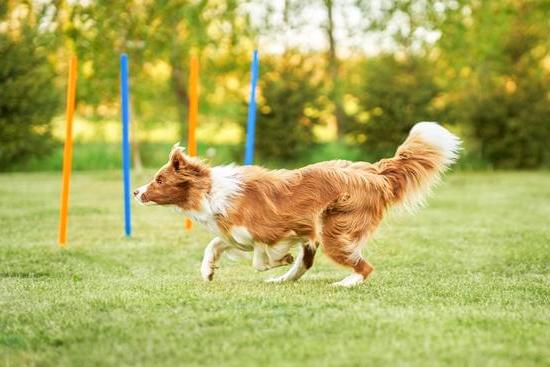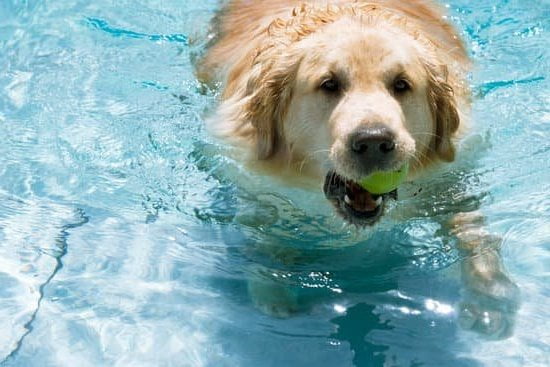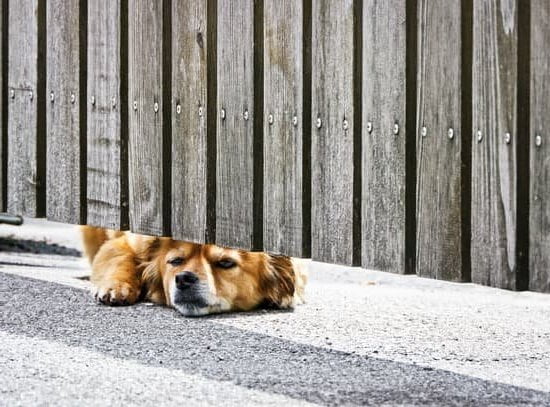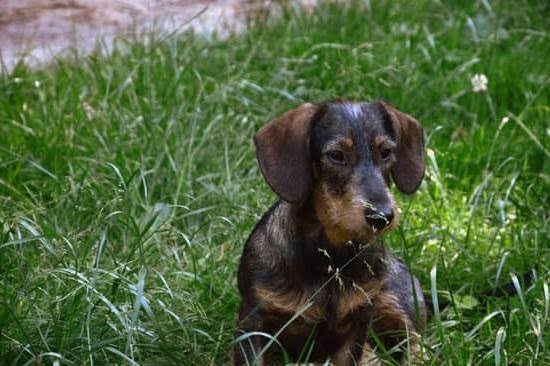Are you wondering how to train an aggressive dog? Training an aggressive dog requires patience, consistency, and understanding. In this article, we will explore the root causes of aggression in dogs, recognize the signs of aggression, and learn effective techniques for training and managing an aggressive dog.
Aggression in dogs can stem from various factors such as fear, anxiety, territorial behavior, or past trauma. Understanding the root cause of aggression is essential in addressing and correcting the behavior. By recognizing the underlying reasons for your dog’s aggression, you can tailor your training approach to effectively address the issue.
Once you have a better grasp of why your dog may be exhibiting aggressive behavior, it is crucial to establish leadership and trust. Building a strong bond with your dog based on trust and respect will lay the foundation for successful training. Positive reinforcement techniques combined with consistent leadership will help build a strong relationship with your dog and encourage positive behavior.
Implementing desensitization and counterconditioning techniques can also help modify your dog’s response to particular triggers that may prompt aggressive behavior. Seeking professional help and support from a qualified dog trainer or behaviorist can provide valuable guidance in training an aggressive dog. Additionally, managing the environment to avoid triggers while maintaining consistency and patience are key factors in successfully training an aggressive dog.
Recognizing the Signs of Aggression in Dogs
Understanding and recognizing the signs of aggression in dogs is crucial for their training and overall safety. Here are some key behaviors to look out for:
- Growling and showing teeth
- Lunging or snapping at people or other animals
- Stiff body language, including raised fur and ears pulled back
- Possessiveness over food, toys, or sleeping areas
- Pacing, restlessness, or hyper-vigilance
If you notice any of these behaviors in your dog, it’s important to take them seriously and seek the proper guidance on how to train an aggressive dog.
It is important to know that aggression in dogs can have various causes, including fear, anxiety, territorial instincts, or past traumas. Understanding the root of your dog’s aggression is a crucial step in addressing and managing their behavior effectively.
Recognizing the signs of aggression in dogs is the first step towards modifying their behavior and ensuring a safe and harmonious relationship between you and your pet.
By understanding these signs, you can better address an aggressive dog’s behavior while also taking necessary steps to ensure everyone’s safety. Always remember to consult with a professional if you are unsure about how to train an aggressive dog effectively.
Establishing Leadership and Trust
Building a Strong Bond
One of the most important steps in training an aggressive dog is to establish a strong bond based on trust and respect. Dogs are pack animals and need a leader to follow. By being a calm, assertive, and consistent leader, you can help your aggressive dog feel more secure and less likely to act out.
Setting Clear Boundaries
It’s crucial to set clear boundaries for your dog to understand what behavior is acceptable and what is not. Consistency is key when it comes to enforcing these boundaries. Use positive reinforcement techniques to reward good behavior while ignoring or redirecting unwanted behavior.
Training Exercises
Regular training exercises can also help build trust with your aggressive dog. Basic obedience training, such as sit, stay, and come commands, can create a sense of structure and predictability for your dog. This can also help establish you as the leader in the relationship.
By following these steps and creating a strong foundation of leadership and trust, you can begin to address the root causes of your dog’s aggression more effectively. Remember that training an aggressive dog takes time, patience, and dedication.
Positive Reinforcement Training Techniques
Use of Treats and Rewards
One effective way to train an aggressive dog is through the use of positive reinforcement, which involves rewarding good behavior with treats, praise, or toys. When your dog demonstrates non-aggressive behavior, such as sitting calmly or playing nicely with other dogs, immediately reward them with a treat or verbal praise. This will help them associate positive actions with rewards, encouraging them to continue displaying good behavior.
Clicker Training
Clicker training is another positive reinforcement technique that can be particularly useful in training an aggressive dog. The clicker serves as a signal to your dog that they have done something right, followed by a reward. By consistently pairing the sound of the clicker with treats or praise, your dog will learn to understand that the click means they have performed the desired behavior.
Consistency and Clear Communication
It is essential to maintain consistency in using positive reinforcement techniques when training an aggressive dog. Ensure that all family members and individuals interacting with the dog are on the same page and using similar methods. Additionally, clear communication is key – make sure to clearly communicate to your dog what behaviors are being rewarded and why, so they can understand what is expected of them.
By employing these positive reinforcement training techniques consistently and patiently, you can make significant progress in training an aggressive dog. Remember that every dog is unique, so it may take time for them to respond to these methods. With dedication and understanding of your pet’s specific needs, you can effectively address their aggression issues and build a more harmonious relationship with your furry companion.
Implementing Desensitization and Counterconditioning
When dealing with an aggressive dog, implementing desensitization and counterconditioning techniques can be highly effective in changing their behavior. These methods involve exposing the dog to the things that trigger their aggression in a controlled and safe environment, while also working to change their emotional response to those triggers. Here are some steps on how to train an aggressive dog using desensitization and counterconditioning:
- Identify the Triggers: The first step in implementing desensitization and counterconditioning is to identify the specific triggers that cause your dog to become aggressive. These triggers could be anything from other dogs or strangers, loud noises, or certain situations.
- Create a Gradual Exposure Plan: Once you have identified the triggers, create a plan to gradually expose your dog to these triggers in a controlled manner. For example, if your dog is aggressive towards other dogs, start by having them at a distance where they can see but not react aggressively towards other dogs.
- Associate Triggers with Positive Experiences: While exposing your dog to their triggers, simultaneously provide them with positive experiences such as treats or playtime. The goal is to create positive associations with the triggers, so that over time, your dog’s emotional response changes from aggression to something more positive.
It’s important to note that desensitization and counterconditioning require patience and consistency. It’s crucial not to rush the process and always prioritize your dog’s safety during training sessions.
Seeking professional help from a certified dog trainer or behaviorist can also be beneficial when implementing desensitization and counterconditioning techniques. They can provide guidance and support tailored to your dog’s specific needs, helping you navigate through this training process effectively. Remember that every dog is unique, so what works for one may not work for another when it comes to addressing aggression.
By following these steps and remaining patient and consistent throughout the process, you can successfully train an aggressive dog using desensitization and counterconditioning techniques.
Seeking Professional Help and Support
In some cases, training an aggressive dog can be challenging and may require the expertise of a professional dog trainer or behaviorist. These individuals have the knowledge and experience to assess your dog’s behavior and develop a customized training plan to address their aggression. It is crucial to seek help from someone with a background in positive reinforcement training methods, as these have been proven effective in modifying aggressive behavior in dogs.
When seeking professional help, it is essential to choose a qualified and certified trainer or behaviorist who has experience specifically in dealing with aggressive dogs. Look for someone who uses force-free and humane training techniques, as harsh or punitive methods can escalate aggression in some dogs. Additionally, it may be beneficial to seek support from veterinary professionals who can rule out any underlying medical issues that could be contributing to your dog’s aggressive behavior.
Professional help and support are not only beneficial for the dog but also for the owner. Dealing with an aggressive dog can be stressful and overwhelming, and having guidance from a knowledgeable professional can provide much-needed reassurance and expertise. By working closely with a skilled trainer or behaviorist, you can gain valuable insight into how to train an aggressive dog effectively while ensuring their safety and well-being.
Training an aggressive dog requires patience, dedication, and the right approach. Seeking professional help is a crucial step in addressing your dog’s aggression and can greatly improve the chances of success in modifying their behavior.
| Professional Help | Support |
|---|---|
| Customized training plan | Reassurance |
| Certified trainer/behaviorist | Expertise |
| Veterinary professionals | Dedication |
Managing the Environment to Avoid Triggers
One of the most important aspects of training an aggressive dog is to manage the environment to avoid triggers that may lead to aggressive behavior. This involves identifying and understanding the specific situations, people, or objects that trigger aggression in your dog, and making sure to minimize their exposure to these triggers. For example, if your dog becomes aggressive around other dogs, it’s essential to keep them on a leash or behind a fence when encountering other animals.
In addition to physical barriers, it’s crucial to create a structured and predictable environment for your dog. This means establishing routines for feeding, exercise, playtime, and rest. Predictability can help reduce anxiety in aggressive dogs and minimize potential triggers. Furthermore, it’s important to provide a safe space for your dog where they can retreat when feeling overwhelmed or threatened. This could be a crate or a designated area in your home where they feel secure.
Another key aspect of managing the environment is controlling the stimuli that your dog is exposed to. This includes limiting exposure to loud noises, unfamiliar people, and chaotic situations. By carefully managing what your dog experiences on a daily basis, you can help reduce their stress levels and prevent potential aggressive outbursts.
| Managing the Environment Strategies | Benefits |
|---|---|
| Identify and minimize exposure to triggers | Reduces the likelihood of aggressive behavior |
| Create a structured and predictable environment | Reduces anxiety and provides stability |
| Provide a safe space for your dog | Gives them a place to retreat when feeling overwhelmed |
| Limited exposure to loud noises and unfamiliar stimuli |
Consistency and Patience
In conclusion, training an aggressive dog requires patience, consistency, and a deep understanding of the root causes of aggression. Recognizing the signs of aggression in dogs is crucial in order to address the issue effectively. By establishing leadership and trust through positive reinforcement training techniques, pet owners can begin to shape their dog’s behavior and build a stronger bond with their furry friend.
Implementing desensitization and counterconditioning can help the dog learn to associate previously triggering stimuli with positive experiences, ultimately reducing their aggressive responses. Seeking professional help and support from a certified dog trainer or behaviorist can provide invaluable guidance and expertise in dealing with aggressive behavior.
Managing the environment to avoid triggers is essential in creating a safe and controlled space for both the dog and those around them. With consistency and patience, pet owners can work towards successfully training an aggressive dog and ensuring a happier, more harmonious relationship with their beloved pet. Overall, understanding how to train an aggressive dog involves dedication, hard work, and a commitment to improving the well-being of all involved.
Frequently Asked Questions
Can Aggression Be Trained Out of a Dog?
Aggression in dogs can be trained and managed, but it may not be completely eliminated. Professional trainers can work with the dog to modify its behavior, but it’s important for owners to understand their dog’s limitations and triggers.
How Do You Discipline an Aggressive Dog?
Discipline for an aggressive dog should focus on positive reinforcement rather than punishment. It’s crucial to identify the root cause of the aggression and address it through training, consistency, and patience. Avoid using physical or harsh disciplinary methods.
How Do I Stop a Dog From Being Aggressive?
To stop a dog from being aggressive, start by consulting a professional trainer or behaviorist to evaluate the situation and provide guidance on how to manage the behavior. Consistent training, socialization, and creating a safe environment are key factors in reducing aggression in dogs.

Welcome to the blog! I am a professional dog trainer and have been working with dogs for many years. In this blog, I will be discussing various topics related to dog training, including tips, tricks, and advice. I hope you find this information helpful and informative. Thanks for reading!





